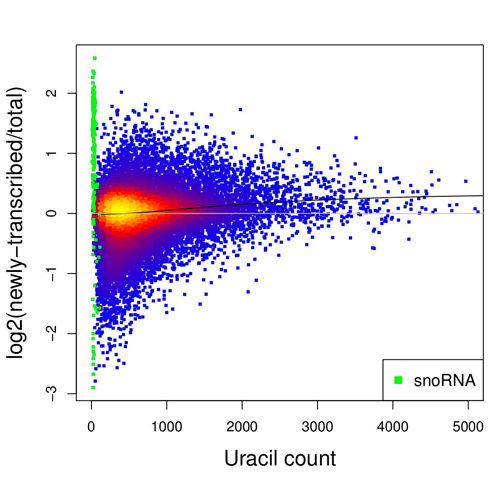Ultra short and progressive 4sU-tagging reveals key characteristics of RNA processing at nucleotide resolution
26-Apr-2012
RNA synthesis and decay rates determine the steady-state levels of cellular RNAs. Metabolic tagging of newly transcribed RNA by 4-thiouridine (4sU) can reveal the relative contributions of RNA synthesis and decay rates. The kinetics of RNA processing, however, so far remained unresolved. Here, we show that ultra-short 4sU-tagging not only provides snap-shot pictures of eukaryotic gene expression but, when combined with progressive 4sU-tagging and RNA-seq, reveals global RNA processing kinetics at nucleotide resolution. Using this method, we identified classes of rapidly and slowly spliced/degraded introns. Interestingly, each class of splicing kinetics was characterized by a distinct association with intron length, gene length and splice site strength. For a large group of introns, we also observed long lasting retention in the primary transcript, but efficient secondary splicing or degradation at later time points. Finally, we show that processing of most, but not all small nucleolar (sno)RNA-containing introns is remarkably inefficient with the majority of introns being spliced and degraded rather than processed into mature snoRNAs. In summary, our study yields unparalleled insights into the kinetics of RNA processing and provides the tools to study molecular mechanisms of RNA processing and their contribution to the regulation of gene expression.











